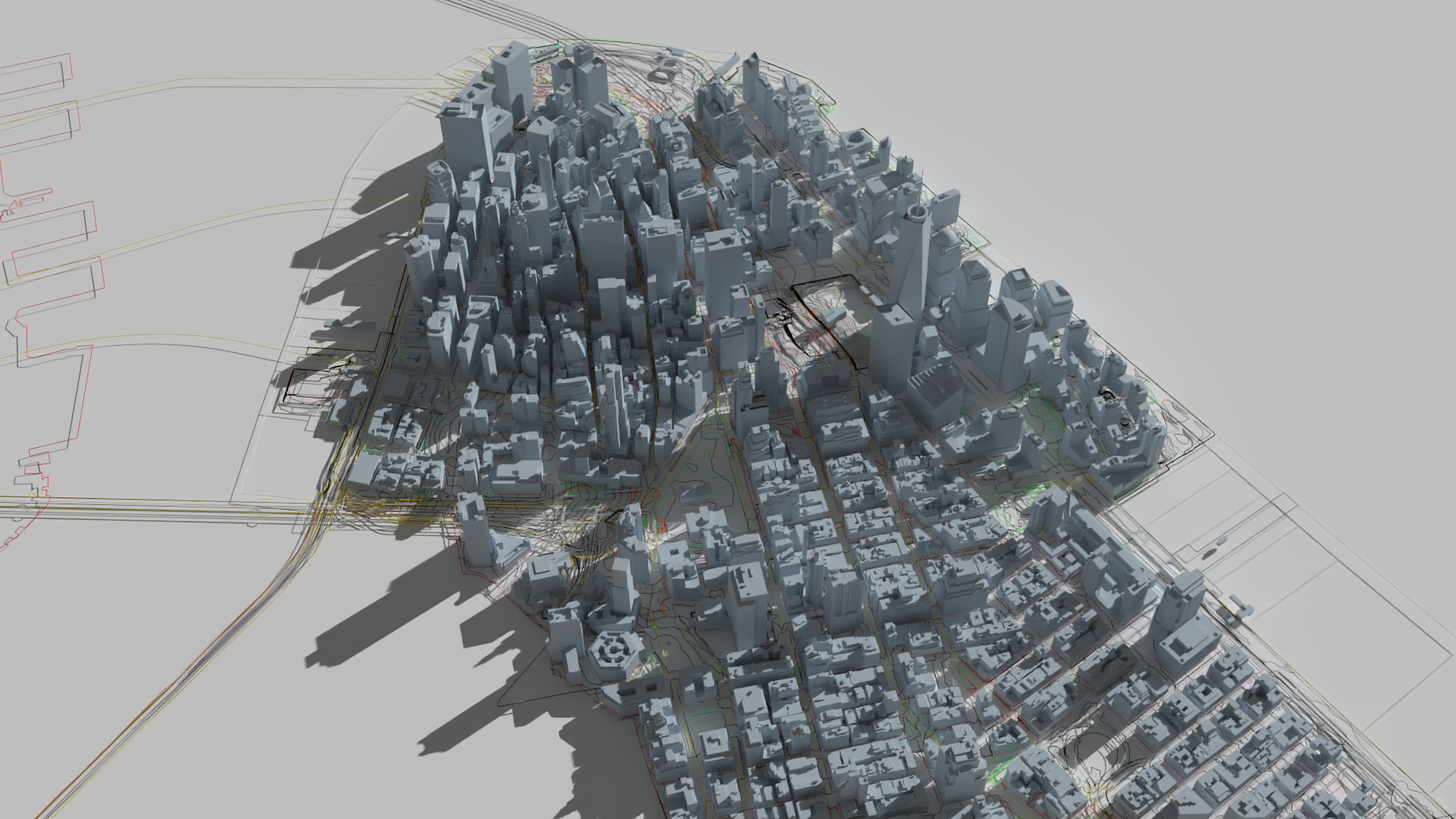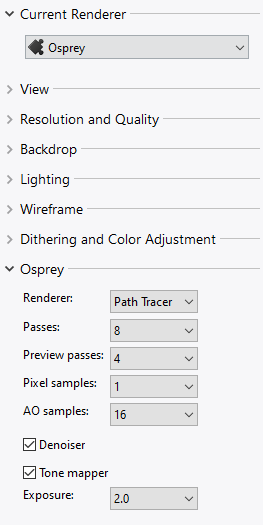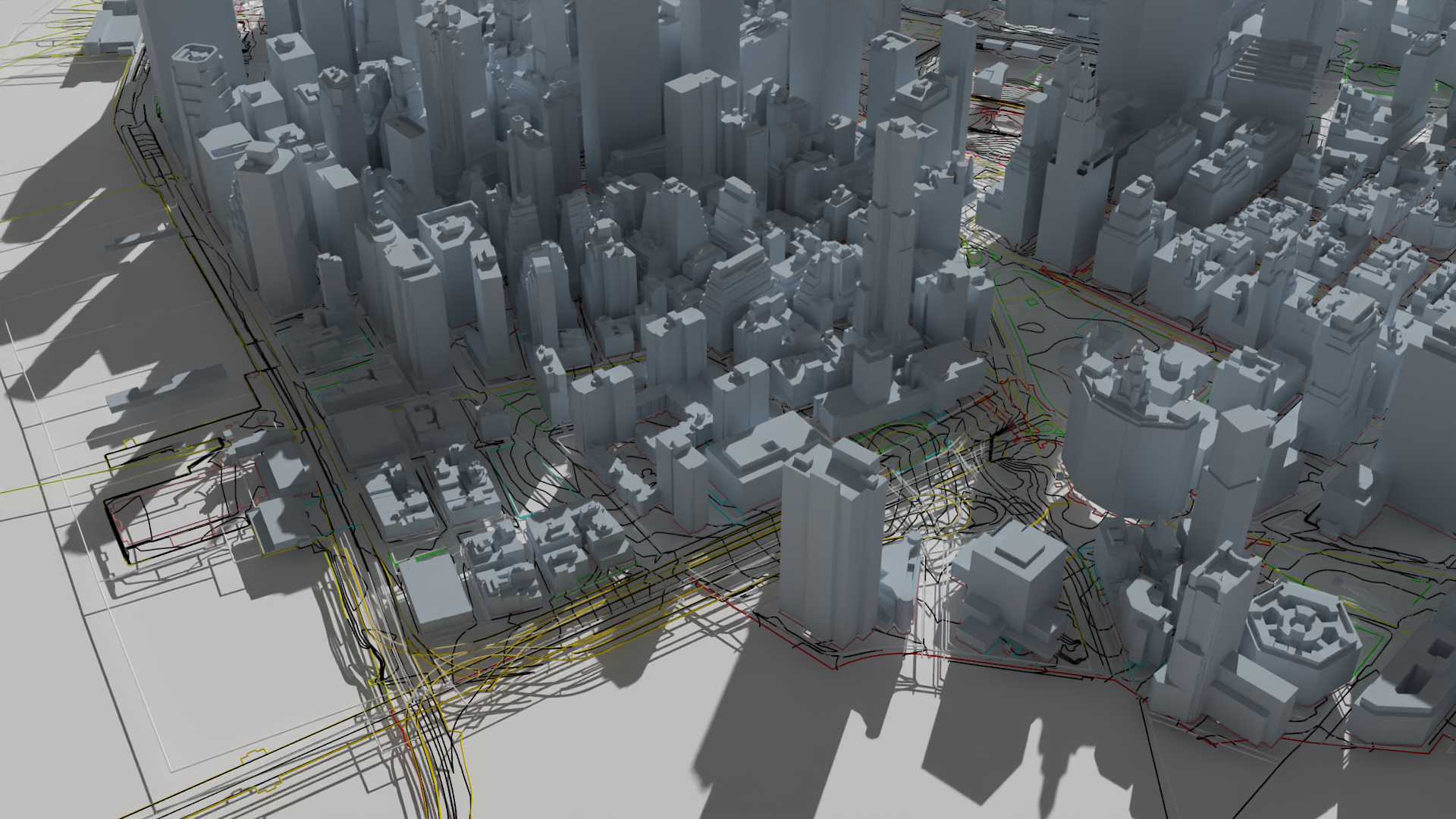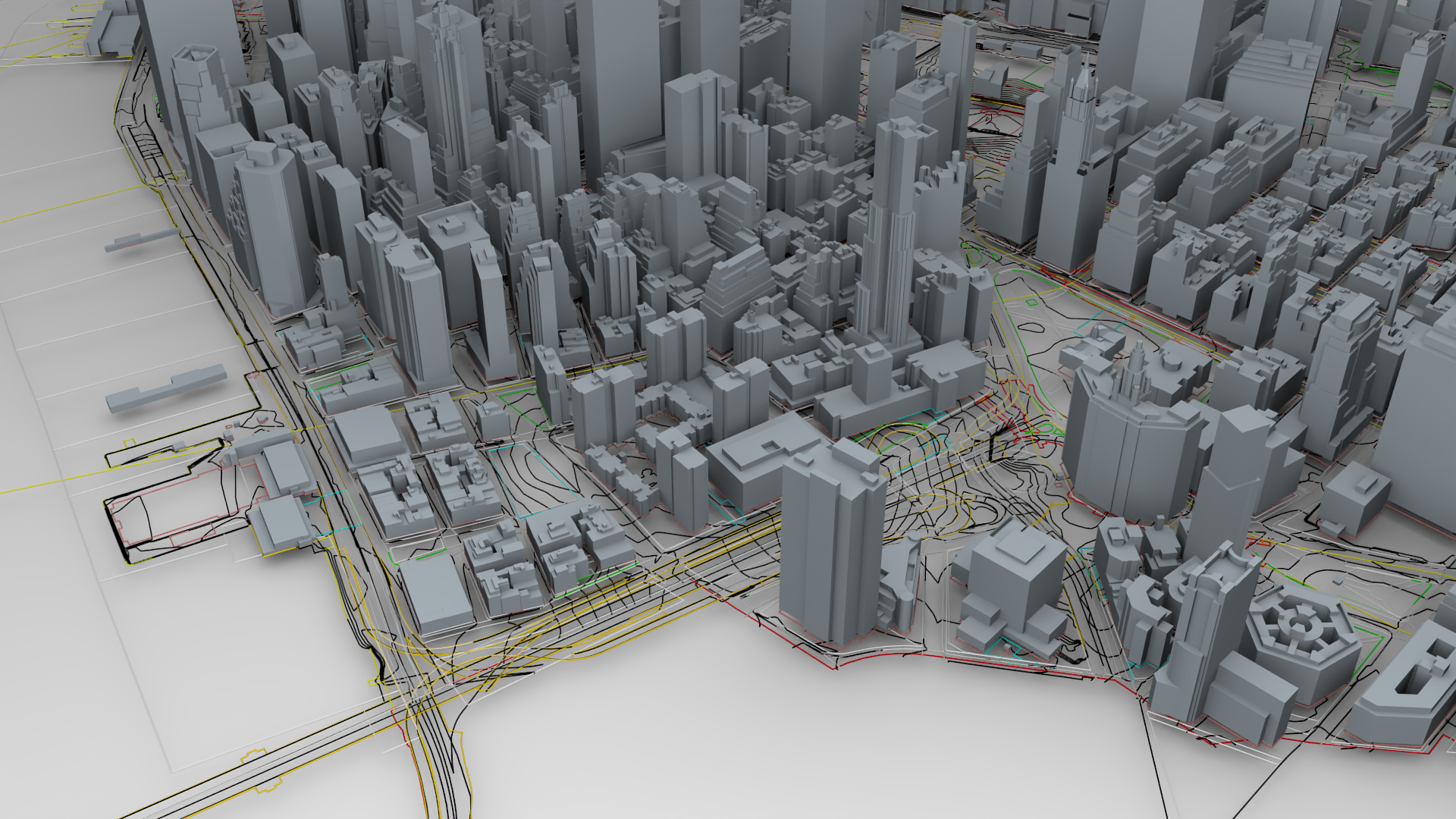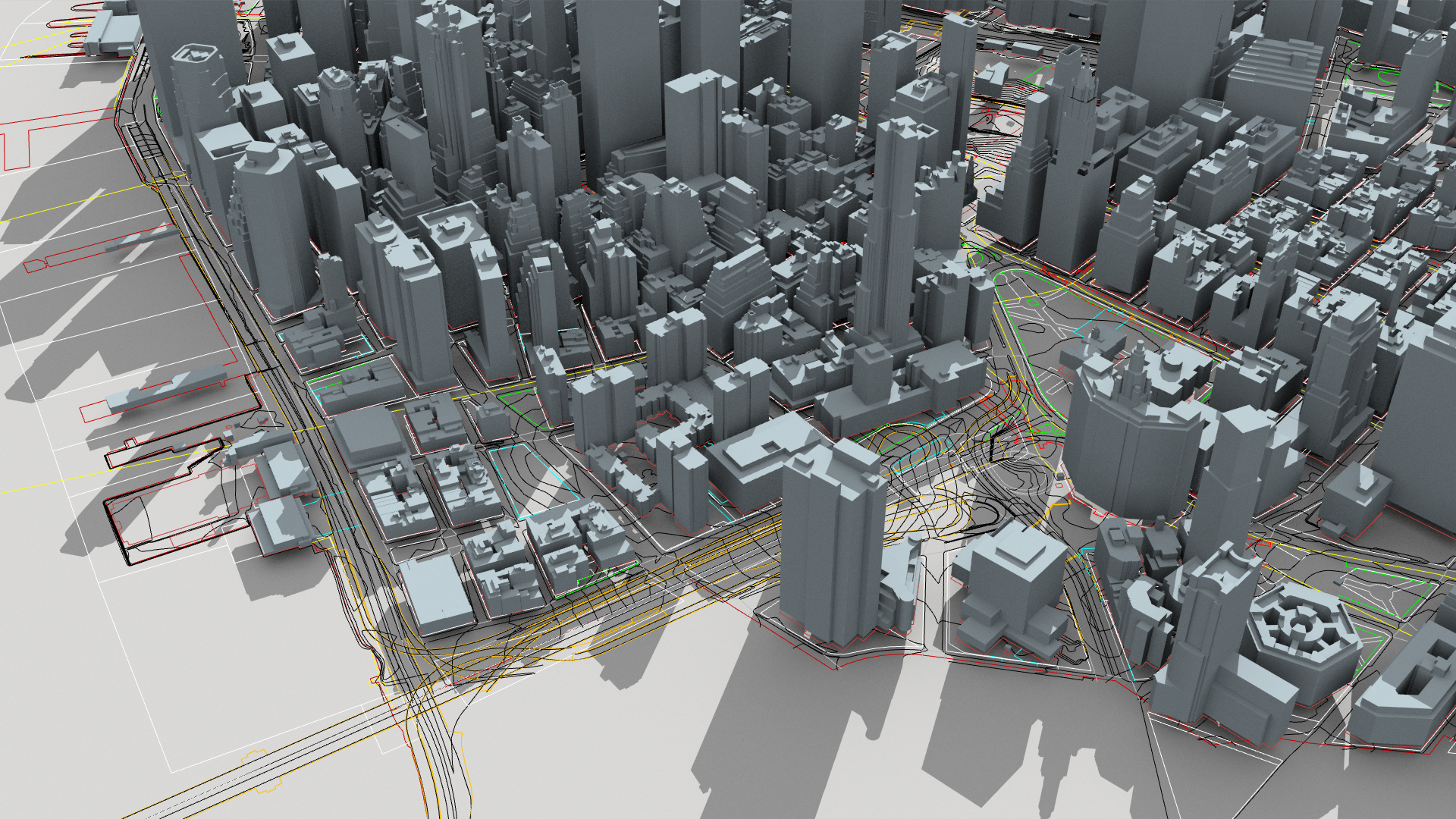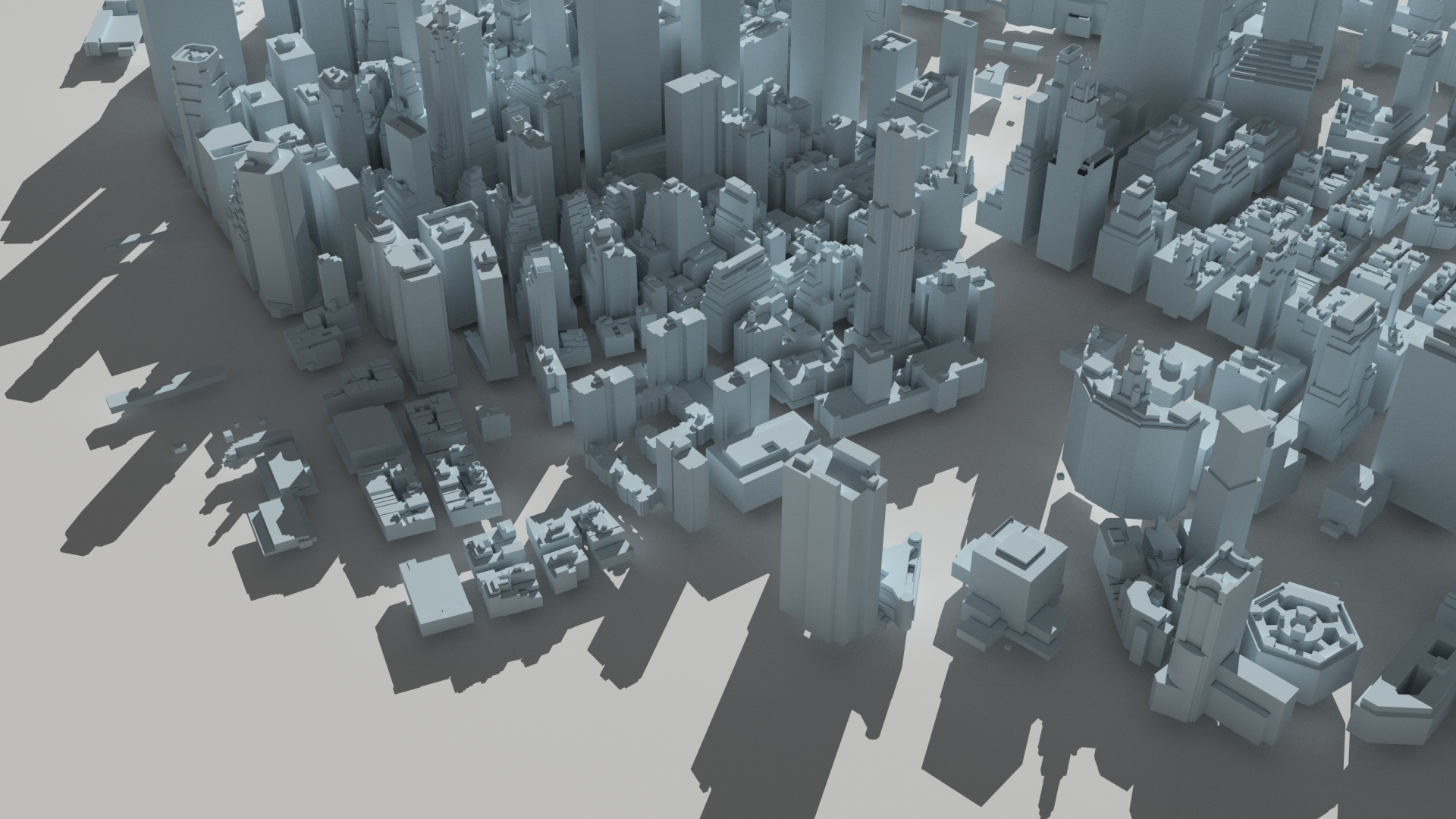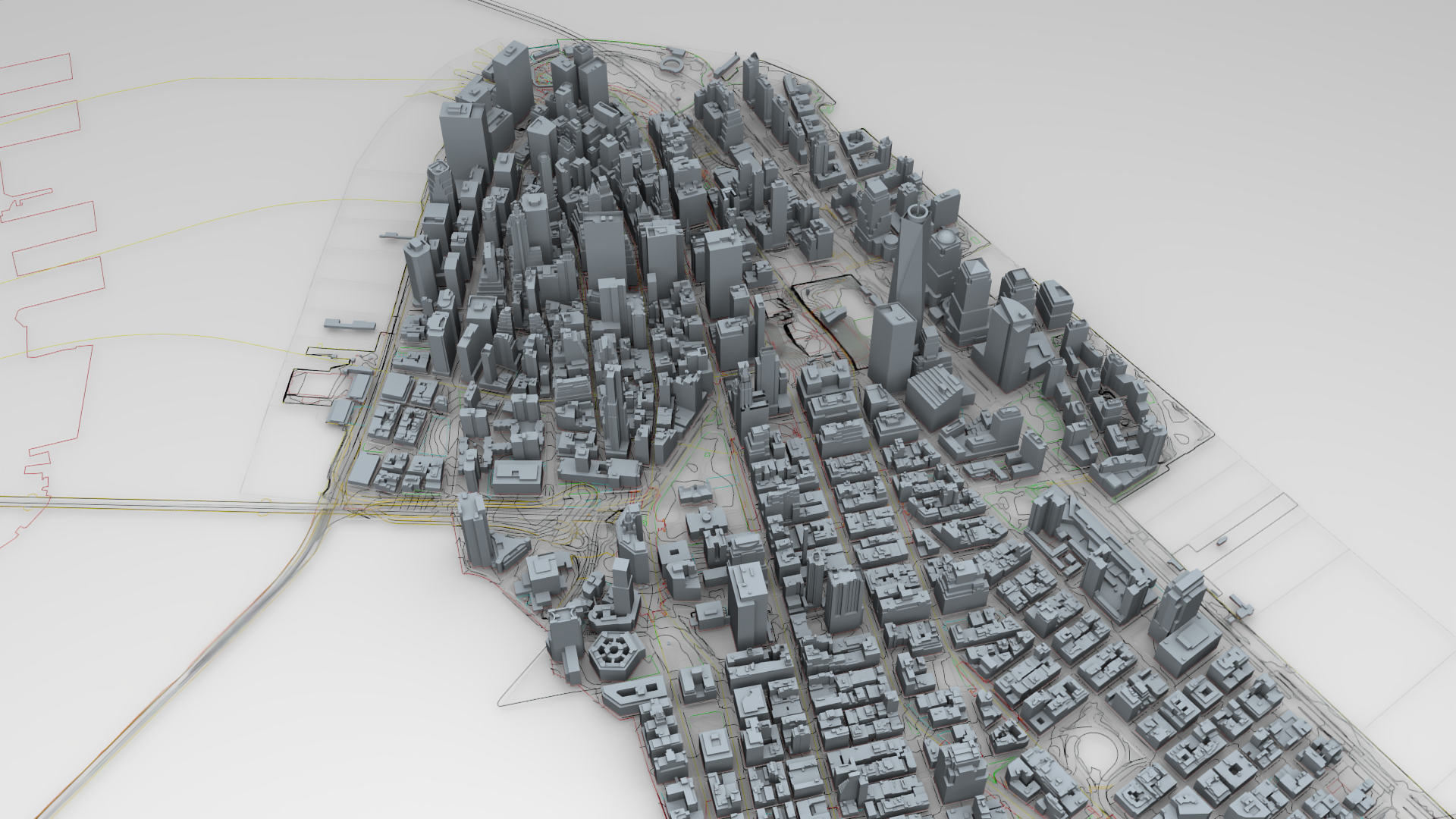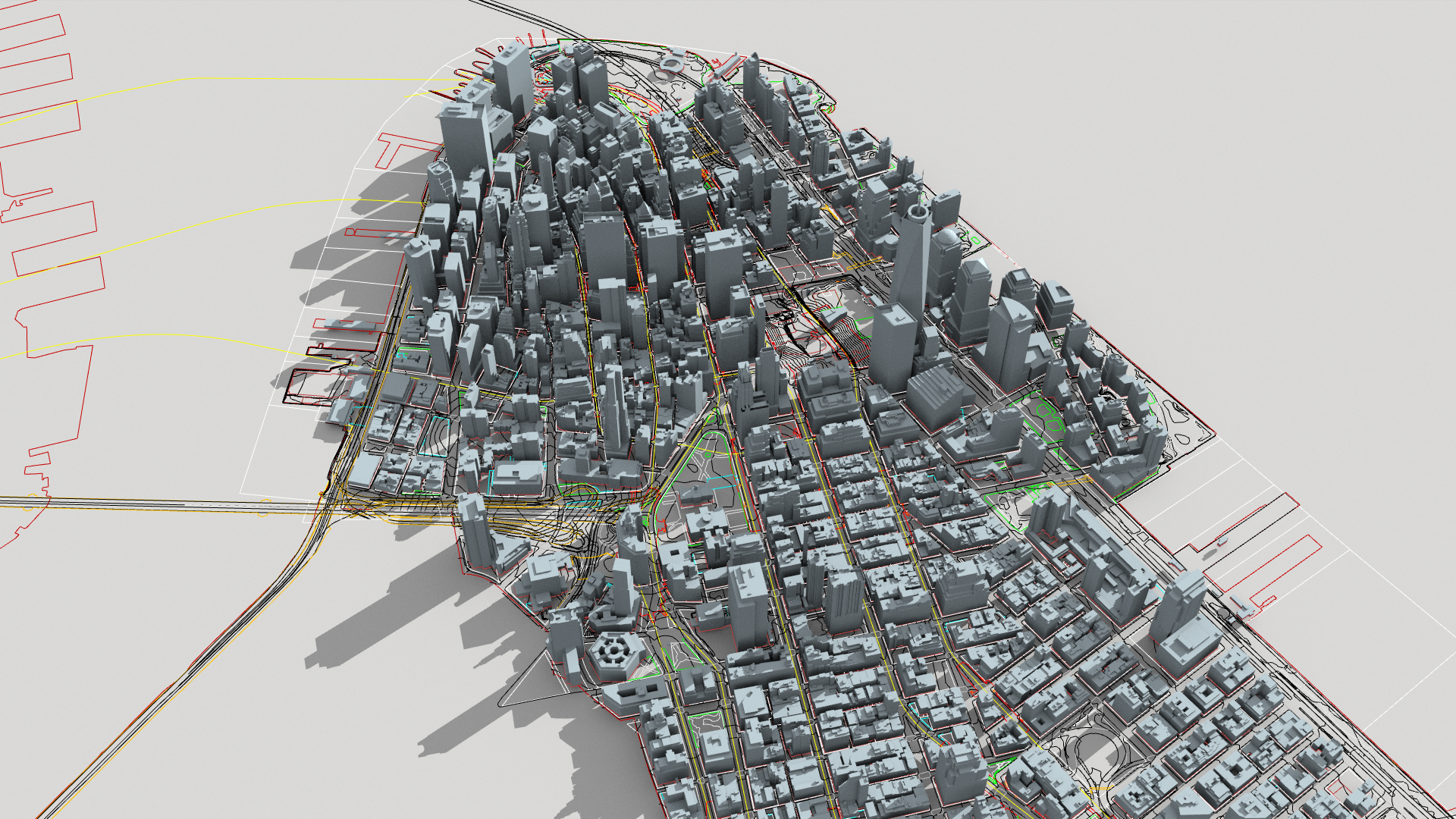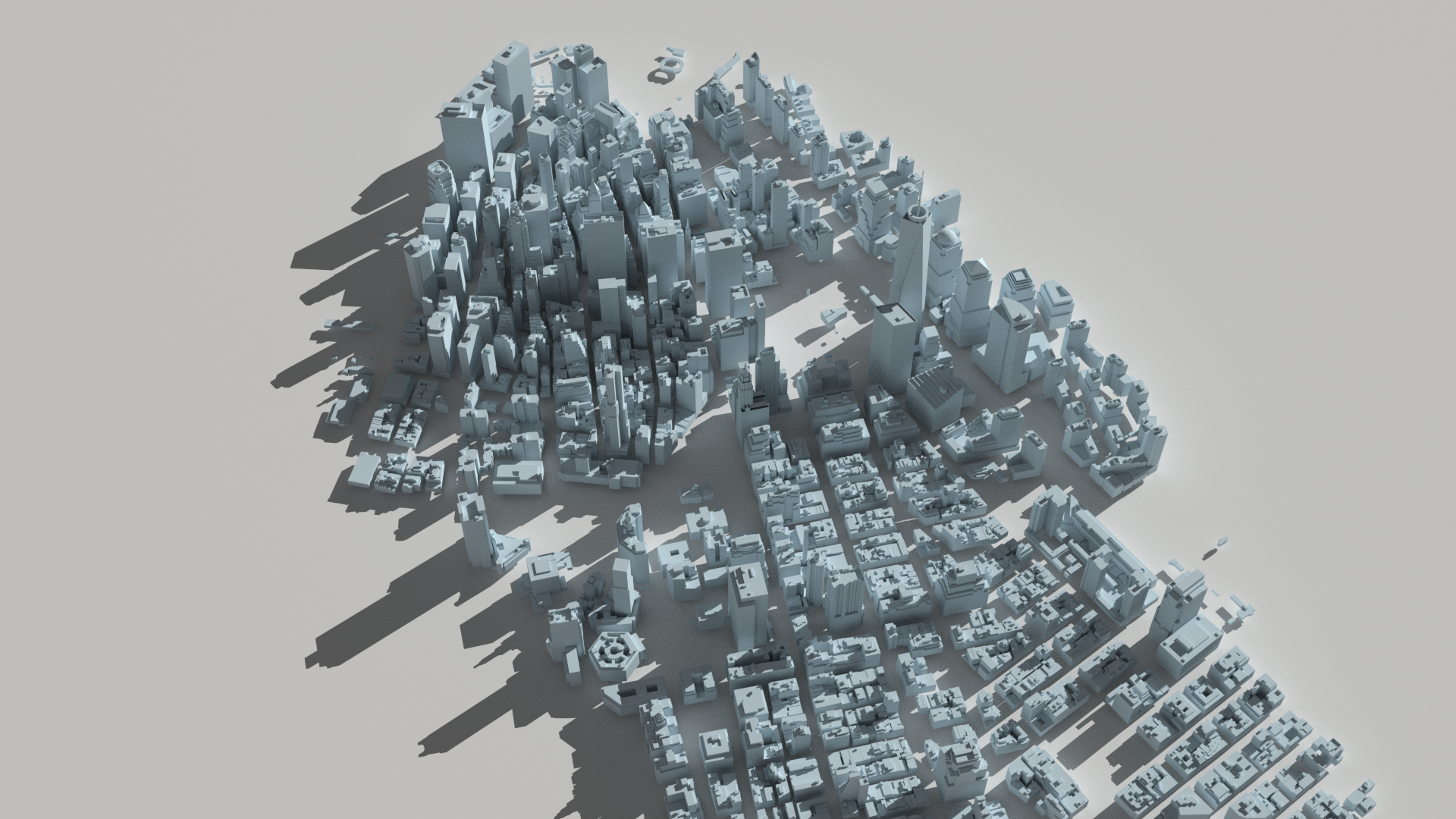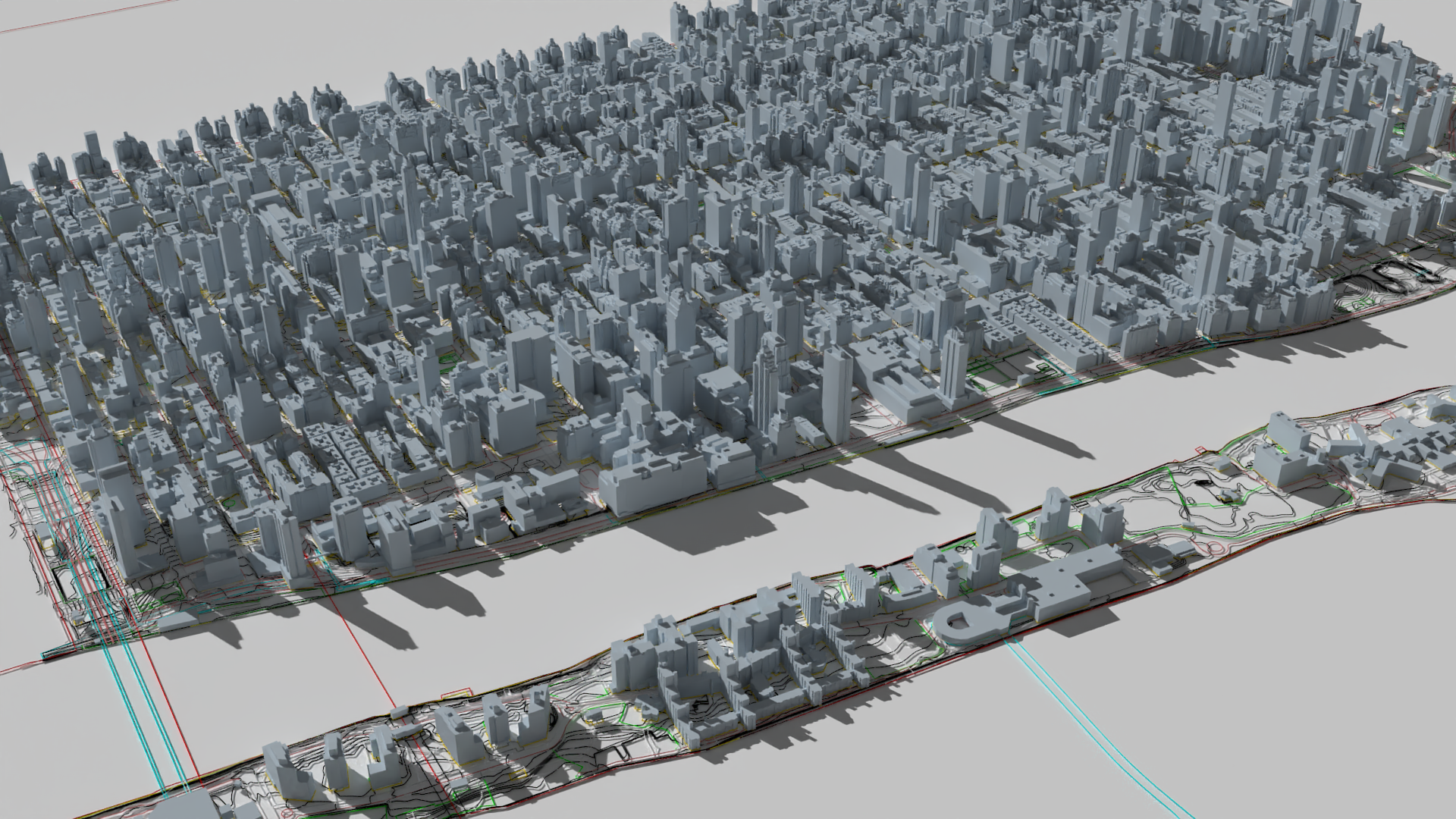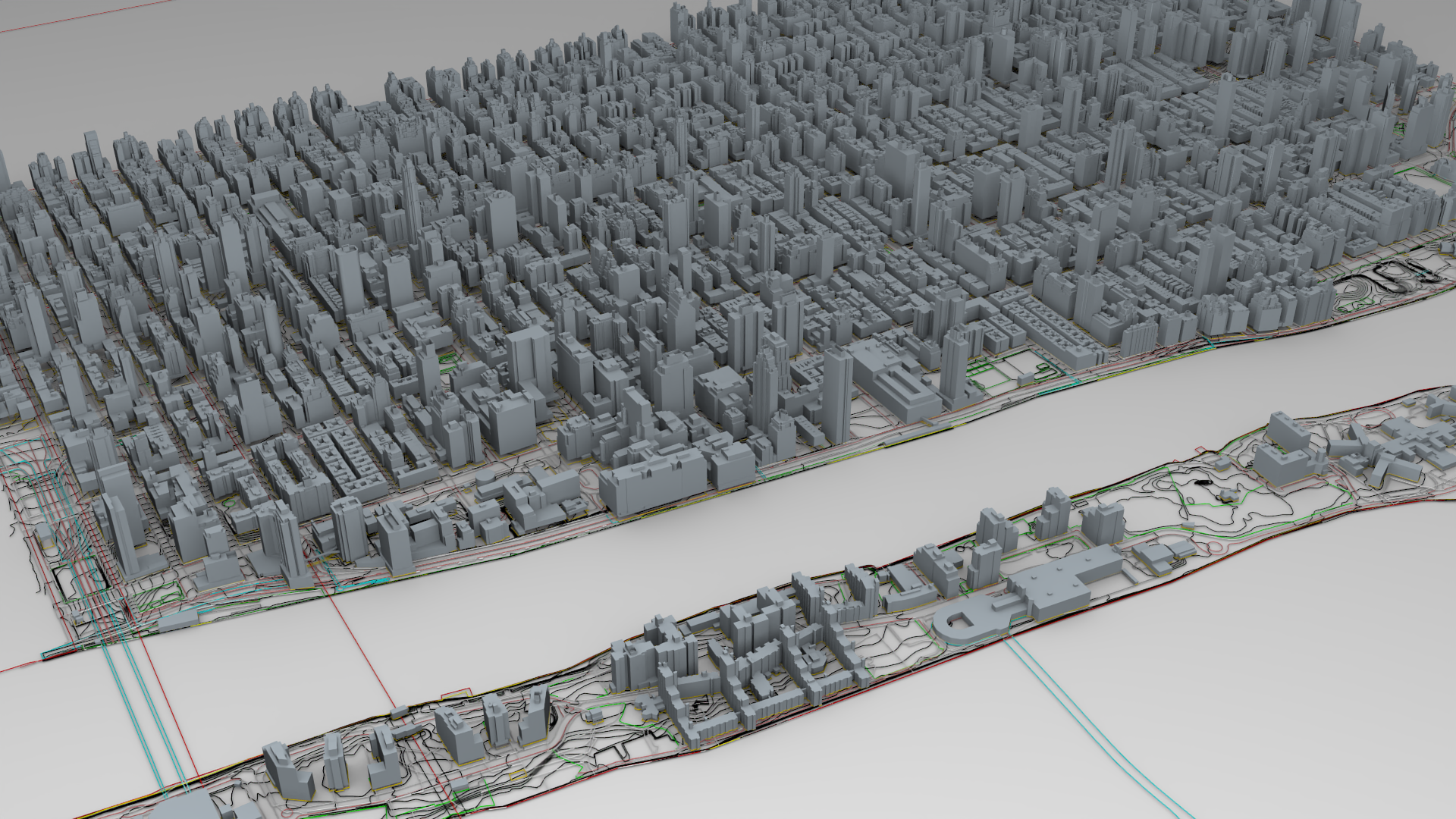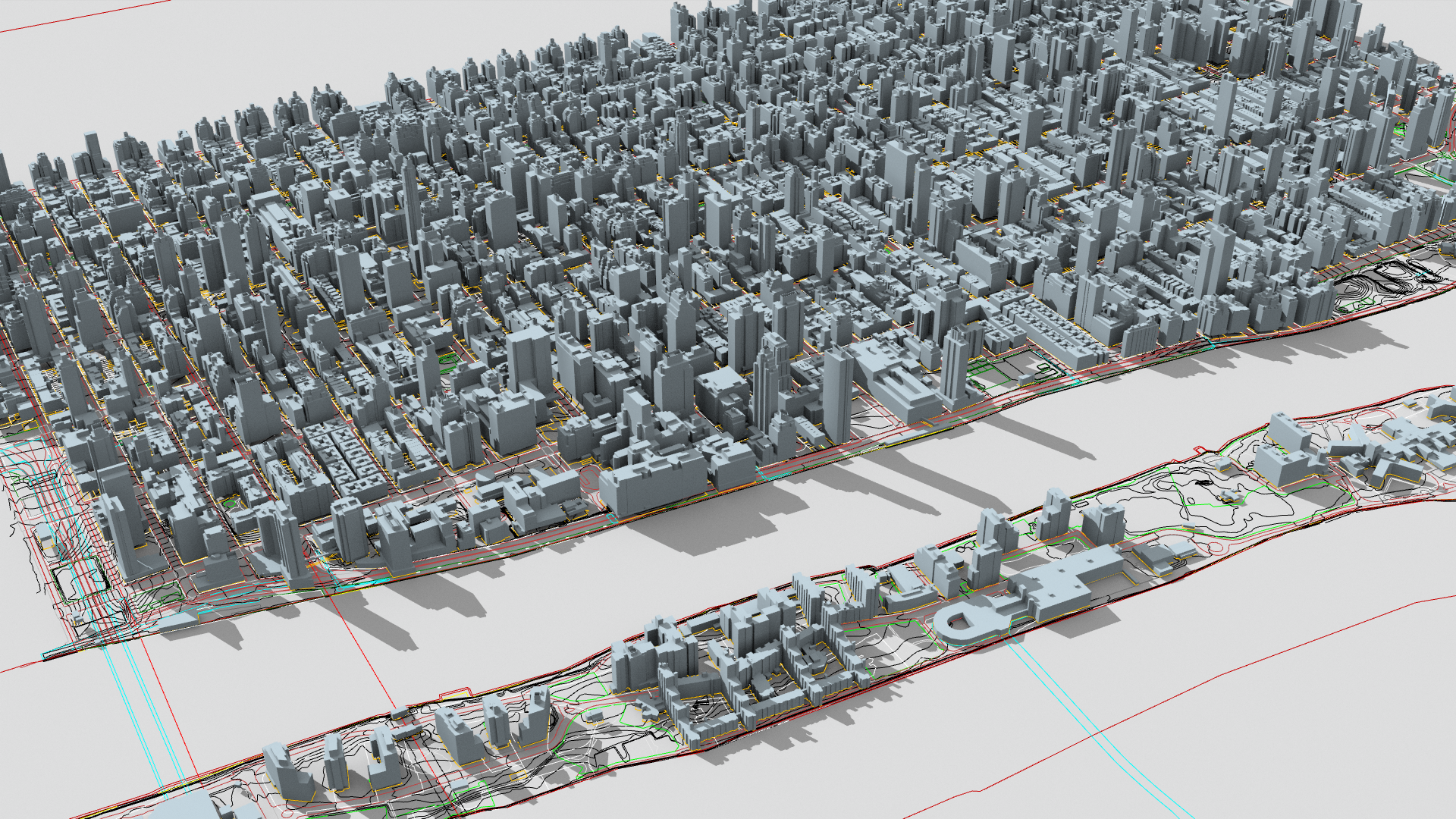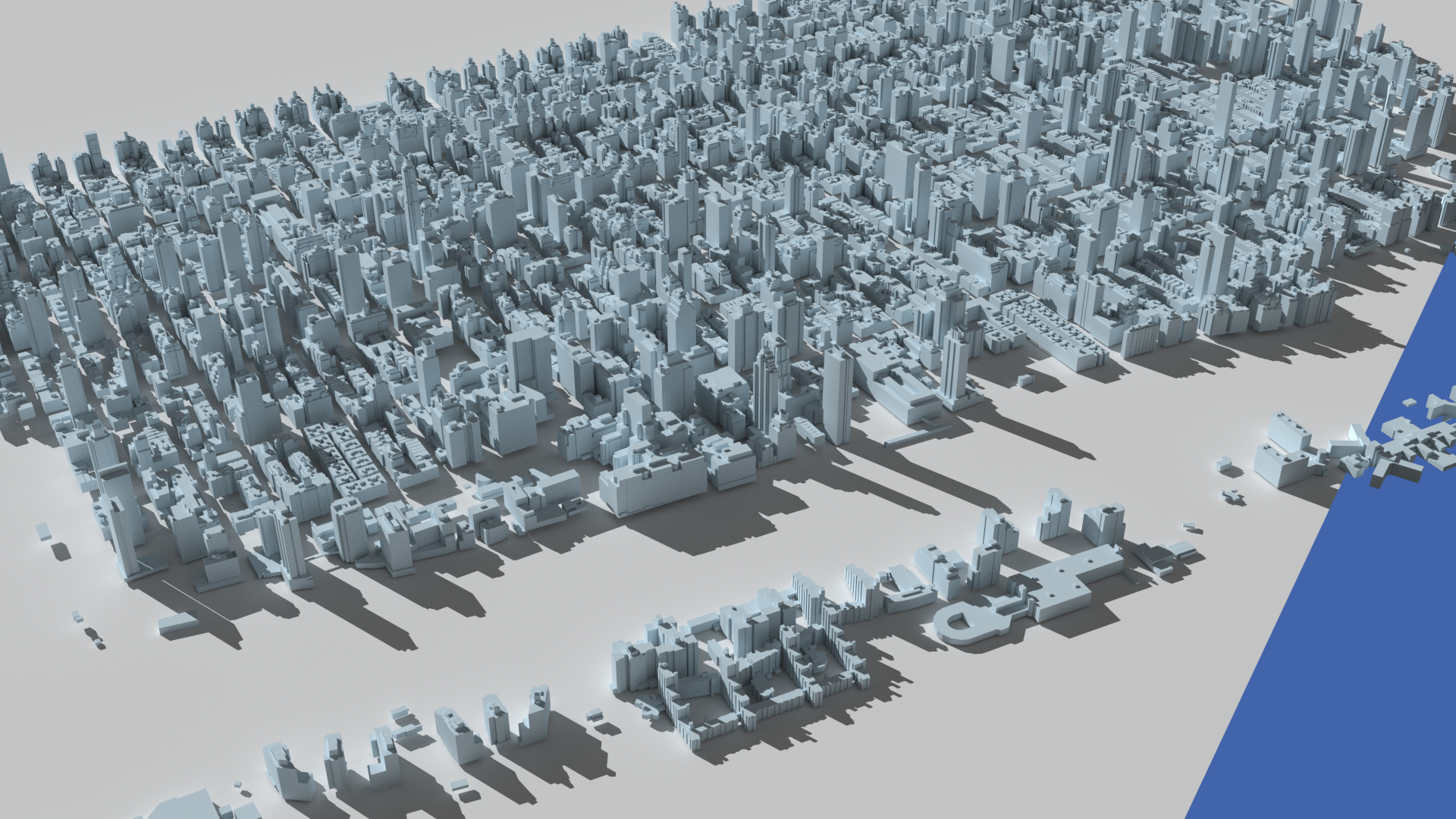Osprey is an open source plugin that integrates the OSPRay renderer and Rhino 3D modeler. OSPRay is an "open source, scalable, and portable ray tracing engine for high-performance, high-fidelity visualization on Intel Architecture CPUs."
This plugin is in the early stages of development.
Robert McNeel & Associates Rhino: https://www.rhino3d.com
Intel OSPRay: https://www.ospray.org/
Download the 0.2.0 release for Rhino 6 on Windows: https://github.com/darbyjohnston/Osprey/releases/download/v0.2.0/Osprey-0.1-rh6-win-x64.rhi
Install the plugin by starting Rhino and dragging and dropping the plugin file onto the Rhino application.
To use the plugin change the current renderer in Rhino to "Osprey". There are some render settings in the "Osprey" section of the "Rendering" panel.
- Renderer - The name of the renderer to use.
- Passes - The number of passes to render.
- Preview passes - The number of low resolution preview passes to render before the main passes.
- Pixel samples - The number of pixel samples.
- AO samples - The number of ambient occlusion samples.
- Denoiser - Enable denoiser post-processing.
- Tone mapper - Enable tone mapping post-processing. If this is enabled the "Gamma" setting in "Dithering and Color Adjustment" should be set to 1.0.
- Exposure - Exposure setting for the tone mapper.
Completed or in-progress:
- Meshes
- Extrusions
- BReps
- Blocks
- Basic materials
- Ground plane
- Lines
- Perspective cameras
- Ortho cameras
- Sun
- Render settings UI
- Viewport rendering
TODO:
- Lights - #2
- Backgrounds - #4
- Environments - #5
- Points - #7
- Curves - #8
- PBR materials - #9
- Textures - #10
- Async rendering - #11
- Add macOS support - #13
- Previews - #15
- Continuous integration builds - #16
These scenes are from data sets of New York City provided by BYTES of the BIG APPLE: https://www1.nyc.gov/site/planning/data-maps/open-data/dwn-nyc-3d-model-download.page
The scene MN01 consists of 132255 model components with a file size of about 350MB: https://www1.nyc.gov/assets/planning/download/zip/data-maps/open-data/nyc-3d-model/nyc_3dmodel_mn01.zip
The scene MN08 consists of 366474 model components with a file size of about 950MB: https://www1.nyc.gov/assets/planning/download/zip/data-maps/open-data/nyc-3d-model/nyc_3dmodel_mn08.zip
The scenes were opened in Rhino and modified with the following:
- Added a sun
- Added a ground plane
- Added a new material for the buildings
- Enabled the skylight with an intensity of 0.3 and the default custom environment
- Enabled curve rendering
- Set the render gamma to 2.2 and enabled the linear workflow
- Set the backdrop to the solid color: 65, 100, 170
OSPRay renderer settings:
- Resolution: 1920x1080
- Passes: 8
- Pixel samples: 1
- Ambient occlusion samples: 16
- Denoiser: Enabled
- Building diffuse color: 140, 160, 175
Rhino 6 renderer settings:
- Resolution: 1920x1080
- Quality: Good
- Building diffuse color: 220, 240, 250
Rhino 7 WIP renderer settings:
- Resolution: 1920x1080
- Quality: Good
- Building diffuse color: 220, 240, 250
Test machines:
- Xeon E5-1630 v4 4 Cores @ 3.7GHz, 64GB RAM, NVIDIA Quadro P5000, Windows 10
- Ryzen 7 1700 8 cores @ 3.0GHz, 16GB RAM, NVIDIA GeForce 660Ti, Windows 10
- Xeon E5-1630: 1m 27s
- Ryzen 7 1700: 1m 9s
- Xeon E5-1630: 1m 24s
- Ryzen 7 1700: 1m 12s
- Xeon E5-1630: 11m 41s
- Ryzen 7 1700: 2m 50s
- Xeon E5-1630: 9m 56s
- Ryzen 7 1700:
- Xeon E5-1630: 1m 16s
- Ryzen 7 1700: 1m 5s
- Xeon E5-1630: 1m 24s
- Ryzen 7 1700: 57s
- Xeon E5-1630: 8m 16s
- Ryzen 7 1700: 2m 20s
- Xeon E5-1630: 8m 36s
- Ryzen 7 1700:
- Xeon E5-1630: 1m 53s
- Ryzen 7 1700: 1m 22s
- Xeon E5-1630: 1m 31s
- Ryzen 7 1700: 1m 10s
- Xeon E5-1630: 13m 29s
- Ryzen 7 1700: 6m 8s
- Xeon E5-1630: 1h 1m 38s
- Ryzen 7 1700:
Requirements:
- Visual Studio 2017
- Rhino 6 SDK - https://www.rhino3d.com/download/Rhino-SDK/6.0/release
- Git - https://git-scm.com/
- CMake - https://cmake.org/
Open a Visual Studio 2017 x64 Native Tools Command Prompt. Choose a directory and clone the repository:
> git clone -b https://github.com/ospray/ospray.git
Create a directory for the build and run CMake:
> mkdir ospray-build
> cd ospray-build
> cmake ../ospray/scripts/superbuild -G "NMake Makefiles" -DINSTALL_IN_SEPARATE_DIRECTORIES=FALSE -DBUILD_OIDN=TRUE -DBUILD_OIDN_FROM_SOURCE=FALSE
Start the build:
> nmake
After the build is finished OSPRay will be installed in the "install" sub-directory.
Open the control panel and add a new environment variable called "OSPRAY_INSTALL". Set the value to the full path of the "install" sub-directory.
Open a Visual Studio 2017 x64 Native Tools Command Prompt. Choose a directory and clone the repository:
> git clone https://github.com/darbyjohnston/Osprey.git
Open the "Osprey.sln" file with Visual Studio 2017 and start debugging. When the build has finished Rhino will start automatically.
Install the Osprey plugin from the menu "Tools/Options...". The plugin is named "Osprey.rhp" and is located in the sub-directory "x64\Debug" or "x64\Release" depending on your build configuration. Note that if you change the build configuration you will need to reinstall the plugin.
Tag the git repository:
> git tag -a v0.3.0 -m "Version 0.3.0"
> git push origin v0.3.0
A RHI package is generated automatically as part of the project's build events. Add the package to the release page on GitHub.
Bump the version numbers in this README.
Bump the version number in Visual Studio:
- Change the configuration to "Release"
- Right click the "Osprey" project and click "Properties"
- In the dialogs that pops-up, click "Build Events/Post-Build Event"
- Edit the command-line to reflect the new version number
The following steps provide an example of how to make changes to the code.
Fork the repository using the GitHub website and clone it to your local machine:
> git clone https://github.com/you/Osprey.git
> cd Osprey
Add the upstream repository to keep your source code up to date:
> git remote add upstream https://github.com/darbyjohnston/Osprey.git
Create a new branch for your work:
> git checkout -b mychange
Fetch and merge the latest changes:
> git fetch upstream
> git merge upstream/master
When making your change please follow the coding convention and style of the file you are working in.
Once the change is ready create a pull request on GitHub.
Copyright (c) 2020 Darby Johnston, All rights reserved
Redistribution and use in source and binary forms, with or without modification, are permitted provided that the following conditions are met:
- Redistributions of source code must retain the above copyright notice, this list of conditions and the following disclaimer.
- Redistributions in binary form must reproduce the above copyright notice, this list of conditions and the following disclaimer in the documentation and/or other materials provided with the distribution.
- Neither the name of the copyright holder nor the names of its contributors may be used to endorse or promote products derived from this software without specific prior written permission.
THIS SOFTWARE IS PROVIDED BY THE COPYRIGHT HOLDERS AND CONTRIBUTORS "AS IS" AND ANY EXPRESS OR IMPLIED WARRANTIES, INCLUDING, BUT NOT LIMITED TO, THE IMPLIED WARRANTIES OF MERCHANTABILITY AND FITNESS FOR A PARTICULAR PURPOSE ARE DISCLAIMED. IN NO EVENT SHALL THE COPYRIGHT HOLDER OR CONTRIBUTORS BE LIABLE FOR ANY DIRECT, INDIRECT, INCIDENTAL, SPECIAL, EXEMPLARY, OR CONSEQUENTIAL DAMAGES (INCLUDING, BUT NOT LIMITED TO, PROCUREMENT OF SUBSTITUTE GOODS OR SERVICES; LOSS OF USE, DATA, OR PROFITS; OR BUSINESS INTERRUPTION) HOWEVER CAUSED AND ON ANY THEORY OF LIABILITY, WHETHER IN CONTRACT, STRICT LIABILITY, OR TORT (INCLUDING NEGLIGENCE OR OTHERWISE) ARISING IN ANY WAY OUT OF THE USE OF THIS SOFTWARE, EVEN IF ADVISED OF THE POSSIBILITY OF SUCH DAMAGE.
This software is based in part on the works of (in alphabetical order):
- OSPRay - (C) 2013–2020 Intel Corporation
- Rhino SDK - Copyright (c) 1993-2017 Robert McNeel & Associates. All rights reserved.
Trademarks named in the documentation (in alphabetical order):
- AMD is a trademark of Advanced Micro Devices, Inc.
- AMD Ryzen is a registered trademark of Advanced Micro Devices, Inc.
- BYTES of the BIG APPLE is a registered trademark of the City of New York
- Intel, the Intel logo, Xeon, Intel Xeon Phi, and Intel Core are trademarks of Intel Corporation in the U.S. and/or other countries
- Microsoft, Microsoft Windows, and Visual Studio are registered trademarks of Microsoft, Inc.
- NVIDIA, GeForce, and Quadro are registered trademarks of NVIDIA Corporation
- Rhinoceros is a registered trademark of Robert McNeel & Associates
